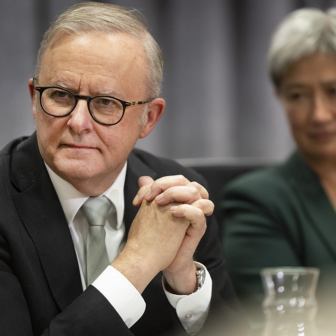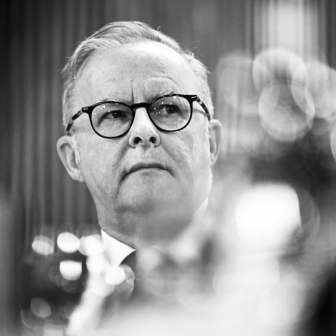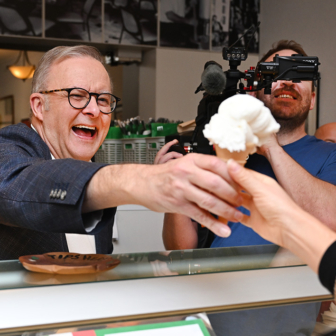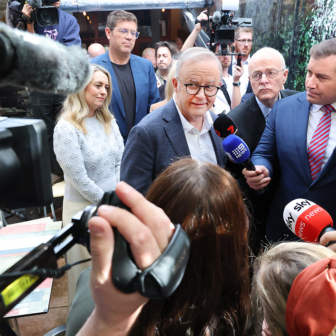The story of the 2015 Canadian general election is widely seen as having begun three years ago in a boxing ring in an Ottawa hotel ballroom. A March 2012 charity match pitted Justin Trudeau, a forty-year-old MP for the third-placed Liberal Party and son of former prime minister Pierre Trudeau, against the pugnacious Patrick Brazeau, a beefy, barrel-chested member of the governing Conservatives who had been appointed one of Canada’s youngest senators in 2009.
The match received considerable publicity because of the expectations surrounding Trudeau, seen by many as having more style than substance. Born in 1971 during his father’s prime ministership, Trudeau’s early years had been passed in the public eye. In young adulthood, like many in his generation, he had drifted, variously studying literature, engineering and environmental geography, and working as a snowboard instructor and later for brief stints as a school teacher, all of it assisted by the comfortable wealth of the Trudeau family. He re-entered the public eye in 2000, aged twenty-eight, at his father’s funeral, with a stirring eulogy that eventually led to work as a motivational speaker, a lucrative sideline he continued even after winning a Montreal parliamentary seat in 2008. But while he had inherited his father’s charisma and sex appeal, Trudeau could point to little in the way of life accomplishments before entering politics. The boxing match against the muscular, menacing Brazeau seemed another cocky example of Trudeau’s dilettante ways. The betting was three-to-one in favour of the Conservative.
The result was a “major upset,” according to one headline. In just three rounds the carefully prepared Trudeau easily defeated the overconfident Brazeau. Within a year, he had also won the leadership of his party, while Brazeau spiralled downward, eventually being suspended from the Senate for suspected fraud amid other personal criminal charges. The lesson: don’t underestimate Justin Trudeau.
As the 2015 election unfolded, though, it was tempting to do so. While Trudeau was a popular and charismatic public figure, he headed a political party, the Liberals, that had shed votes at each of the past four elections, losing office in 2006 to the centre-right Conservative Party and sinking to the unprecedented humiliation of third place behind the surging left-wing New Democrats in 2011. An unabashed party of the centre, the Liberals looked increasingly as if they would be squeezed into obscurity by their more ideological opponents, as had happened in most other countries, and especially those where a Canada-style single member plurality system encourages concentrated two-party competition.
While the Liberals struggled, the governing Conservative Party, led by Stephen Harper, perfected a political machine that used an exceptionally stable base of supporters to power it to strong parliamentary minorities in 2006 and 2008 and a majority in 2011. The Conservatives had a knack of destroying new Liberal leaders by running instant advertising campaigns to shape initial impressions of their opponents. Stéphane Dion, an owlish-looking university professor and former cabinet minister, was quickly labelled “Not a Leader” and dispatched in the 2008 election. And when the Liberals turned to Michael Ignatieff, a Canadian-born public intellectual who had spent decades in Britain and the United States before returning to run for office in Canada, the Conservative ads proclaimed “Just Visiting” and “He Didn’t Come Back for You” and inflicted the worst defeat ever on the Liberals in 2011.
So the Liberal Party was in dire straits in 2013 when it turned to Justin Trudeau as possibly its last, best hope. But Trudeau needed much more than charm to bring it back from oblivion. The party’s weak fundraising was preventing it from responding to well-funded Conservative attacks, and it seemed tactically outclassed by the nimble Conservatives. Trudeau’s rump of Liberals also seemed eclipsed by the rising New Democratic Party, or NDP, whose leader Thomas Mulcair oozed gravitas and substance. Also from Montreal, Mulcair matched Trudeau’s effortless bilingualism and biculturalism, and was a masterful, effective debater in parliamentary questions. Historically a perennial third (and for a while, fourth) in federal elections, the NDP had formed governments in many provinces and finally seemed poised to govern nationally.
The Liberals surged into first place in the polls following Trudeau’s accession to the party leadership in April 2013. But his predecessors had also enjoyed high initial standing before being worn down by relentless Conservative attacks and pressure from the NDP. Close analysis of past election projections and the behaviour of “likely voters” – those who would be certain to cast a ballot in Canada’s optional voting system – suggested a much tighter race. While the Conservatives were highly dedicated and loyal, potential Liberal supporters were more fickle, and often young, with erratic voting histories. Trudeau did receive reasonable ratings as a leader, and in particular was trusted far more than the polarising Stephen Harper. But Thomas Mulcair generally matched Trudeau’s ratings, and his base was at least as reliable.
Trudeau didn’t help himself with statements that seemed uninformed and immature, especially for a national party leader. “There’s a level of admiration I actually have for China,” he said at one point. “Their basic dictatorship is actually allowing them to turn their economy around on a dime.” He characterised the government’s airborne strikes in Iraq as “trying to whip out our CF-18s and show them how big they are.” While Pierre Trudeau had been a major public intellectual in Quebec prior to entering politics in his mid forties, with an elegant old world style and bracing intelligence, his son appeared considerably more shallow. Justin may be more outgoing and much better at handshaking and backslapping than his reserved father was, but it was difficult at times to think of the new Liberal leader as prime ministerial material. The Conservatives turned to their previous methods and unleashed several personalised ads, one labelling him as unqualified but adding, “Nice hair, though.” The slogan: “Justin. Just Not Ready.”
Pierre Trudeau was a polarising prime minister. His intellectualism and cosmopolitan style thrilled many; others thought him an elitist snob. He championed a bilingual vision of Canada, enraging both English speakers, who spoke of “French shoved down our throats,” and nationalists in French-speaking Quebec, whose separatist dreams of independence Trudeau had blocked. He struggled particularly in resource-rich Western Canada, where the government’s energy policies were extremely unpopular and the Trudeau name deeply despised. Although he won the 1980 election, the Liberals secured only two of the seventy-seven seats in the four western provinces.
Among the polarised westerners was a young Calgary resident, Stephen Harper, who became involved during the early 1980s in the campaign to defeat the hated Trudeau Liberals. But Harper also found the Progressive Conservatives, their chief opponents, weak. He joined a right-wing challenger, the Reform Party, and was a major figure in the struggles on the Canadian political right in the 1990s. The sides finally reconciled into a new Conservative Party of Canada in 2003, and elected Stephen Harper as their leader. Winning power in 2006, Harper went on to become the most polarising prime minister since… Pierre Trudeau.
Harper’s worldview can be understood largely as opposition to all that Pierre Trudeau stood for. He championed “ordinary” Canadians against the intellectual elites. He favoured a more decentralised Canadian federation. He was deeply in tune with Western Canada and the energy industry, and dismissed environmental and other opponents. While not directly challenging Trudeau’s greatest accomplishment, the written Charter of Rights and Freedoms, Harper freely complained of “activist” judges and oversaw tougher crime laws. His foreign policy rejected the multilateralism of Trudeau (and most other prime ministers) in favour of a selective, moralistic championing of friends versus opponents.
Harper’s actual policies were often more incremental and cautious than bold. But he governed aggressively. In addition to authorising the party’s attack ads on hapless opponents, he and his advisers were exceptionally controlling of all information and communication, not allowing cabinet ministers to give interviews without approval. Dismissing intellectual elites, he bent parliamentary conventions and showed little interest in gaining the respect of the professional public service. While the durable Conservative base cheered him on, the resentment and opposition to Harper also grew in ferocity as the 2015 election approached. The same slogan began to appear in many signs and online postings: “Stop Harper.”
As I described more fully in an earlier article, the chief issue of the election was Stephen Harper himself. The Conservatives ran on their record, with few major new ideas or noteworthy new candidates. They worked diligently to identify and bring out every one of their solid and dependable supporters. The Liberals and NDP, meanwhile, faced the dilemma of how to prevail against not only the Conservatives, but also ultimately each other. The polls showed the Liberal lead of the past two years evaporating and the Conservatives beginning to rise, much as many had anticipated. By June 2015, pollsters reported a solid three-way race between the major parties, with the various fluctuations usually within the margin of error but the Liberals often showing in third place. The likely outcome was unclear when the Conservatives triggered the start of the formal election period early on 2 August, kicking off a seventy-eight-day campaign that would culminate on 19 October.
The NDP and Liberals chose different ways of presenting themselves as the party to replace Harper. Neither unleashed major attack advertisements specifically against the Conservatives. There was little need, since they were competing for the votes of those already opposed to the Tories. Their goal was to show that they were the best choice to stop Harper. The NDP, closer than it had ever been to governing, played it safe. Leader Mulcair promised balanced budgets and prudent governing, doing all he could to quell expectations of a socialist New Jerusalem and generally smiling whenever possible to dilute his aggressive parliamentary image.
But the Liberals, by definition an opportunistic party able to swivel in many directions, took a leap of faith. Trudeau pledged to run “modest deficits” in order to fund infrastructure and social investments, and criticised both other parties for a lack of vision. Expectations of him remained low, though, as the Conservatives hammered away at Trudeau’s image of superficiality. On 6 August, before the first of five televised debates, the official Conservative spokesman predicted that if Trudeau “comes on stage with his pants on, he will probably exceed expectations.” Trudeau did remember to wear trousers, and came out aggressively in the debate, while Mulcair struggled to appear statesmanlike.
Many issues rose and fell during the campaign, but two stand out. The first was the migrant crisis in Europe, and the disturbing pictures flashed around the world of a dead child whose family had applied for refugee status in Canada. Calls for a massive intake of new refugees erupted, but the Conservatives resisted moving too fast or taking too many security risks. Clumsy statements from the immigration minister didn’t help the image of the Conservatives as heartless, and became one more grievance in the Stop Harper movement.
The second was the issue of face-covering niqabs. The Conservatives had passed legislation requiring any woman wearing the niqab to uncover her face while being sworn in as a Canadian citizen. In September, shortly before a final French-language leaders’ debate focused on a Quebec audience, a court struck down this rule. This brought issues of cultural accommodation front and centre, in the province where such debates are most fervent. The Conservatives maintained their support of the policy and Harper mused about banning public servants from wearing the niqab, though he could not say whether there were currently any such employees. The Liberals took a much more inclusive stance, generally accepting the niqab, consistent with the party’s longstanding multiculturalism. But the NDP was caught. More than half its parliamentary caucus held Quebec seats, mostly in deep francophone areas where the niqab is seen as culturally oppressive. But its anglophone supporters had the opposite view, and would have been enraged if their party supported the Conservative ban. Mulcair spoke against the bans, but his principled stand probably cost the party seats, as we will see.
In early October, after two months of constant campaigning, the polls finally began to change. The Liberals were rising; the NDP was falling back. This trend continued, though with fluctuations, margins of error and the ever-present question of who would actually show up to vote on election day. Nevertheless, the three-way race was beginning to sort itself out. The NDP’s safe strategy and Mulcair’s own grave image were not inspiring voters. Trudeau’s bolder vision, sparkling charisma and extroversion were. The Conservatives turned all their firepower on Trudeau, using selected aspects of the Liberal plan to warn voters that a Liberal vote would mean higher taxes. But the Liberals ran positive ads of Trudeau speaking to large crowds about hope and change, reminiscent of the heights of Obamamania in 2008. His opponents had set the bar of expectations incredibly low, and Trudeau was flying. Harper could not possibly match that optimism and excitement, and the Conservative campaign floundered. The national Globe and Mail newspaper caught the mood of many loyalists when it endorsed the Conservative Party but not its leader because of his aggressive and controlling ways of governing, and said Harper should resign immediately after the election.
In the final days, polls projected a hung parliament with the Liberals leading. Even party optimists didn’t expect to win a majority. Instead, pollsters and observers were careful to draw lessons from the past and suggest the Conservatives could surge to a small plurality, with their dedicated voting base and the “shy Tories” who had not declared their support to pollsters. Both the Liberals and the NDP had pledged – though leaving some wiggle room – never to support a Harper government, leaving conspiracy theorists to muse over possible ways Harper could cling to power.
Election night came, and it was quickly clear: the Liberals didn’t have a workable minority – they had a majority, and the greatest loser was the NDP. The Liberals swept the country with 184 of 338 seats, winning seats in every province. Particularly sweet for Trudeau was winning a respectable twenty-nine of 104 Western Canadian seats, including the first Liberal seats in Calgary since his father’s win in 1968. The Conservatives fell to ninety-nine, primarily in their Western Canada bastion. And the NDP was reduced from nearly one hundred to forty-four seats – still its second-best showing ever, but bittersweet after being so close to power. Many of its Quebec seats were won by the separatist Bloc Québécois – a nearly dead party that came back to win ten seats – and the Conservatives also managed to gain a handful; the niqab issue was a likely factor. But many veteran New Democrats across the country were shocked to be defeated by Liberal challengers, often by large margins. It was clear that voters had chosen Justin Trudeau’s Liberals, either because of his inspiring vision or because they had finally decided he was the best chance to end the Conservative reign and they would do all they could to empower him. Thomas Mulcair has not indicated if he will stay on as leader, but the NDP’s hopes of government have been rudely crushed.
Stephen Harper has indicated he will resign as party leader; Trudeau is to replace him as prime minister on 4 November. It is difficult to say what a Trudeau government will look like. Few expected him to enjoy an unfettered parliamentary majority; many of his inspiring visions were fuzzy on details; and the Liberal Party has a long history of expedience, opportunism and governing in a very different way than promised. Nevertheless, two things are clear. One is that the Liberal Party of Canada has resurged after being at death’s door, and is likely to continue confounding predictions that a centrist party should not exist in Canada. The second, of course, is that one should never underestimate Justin Trudeau. •




